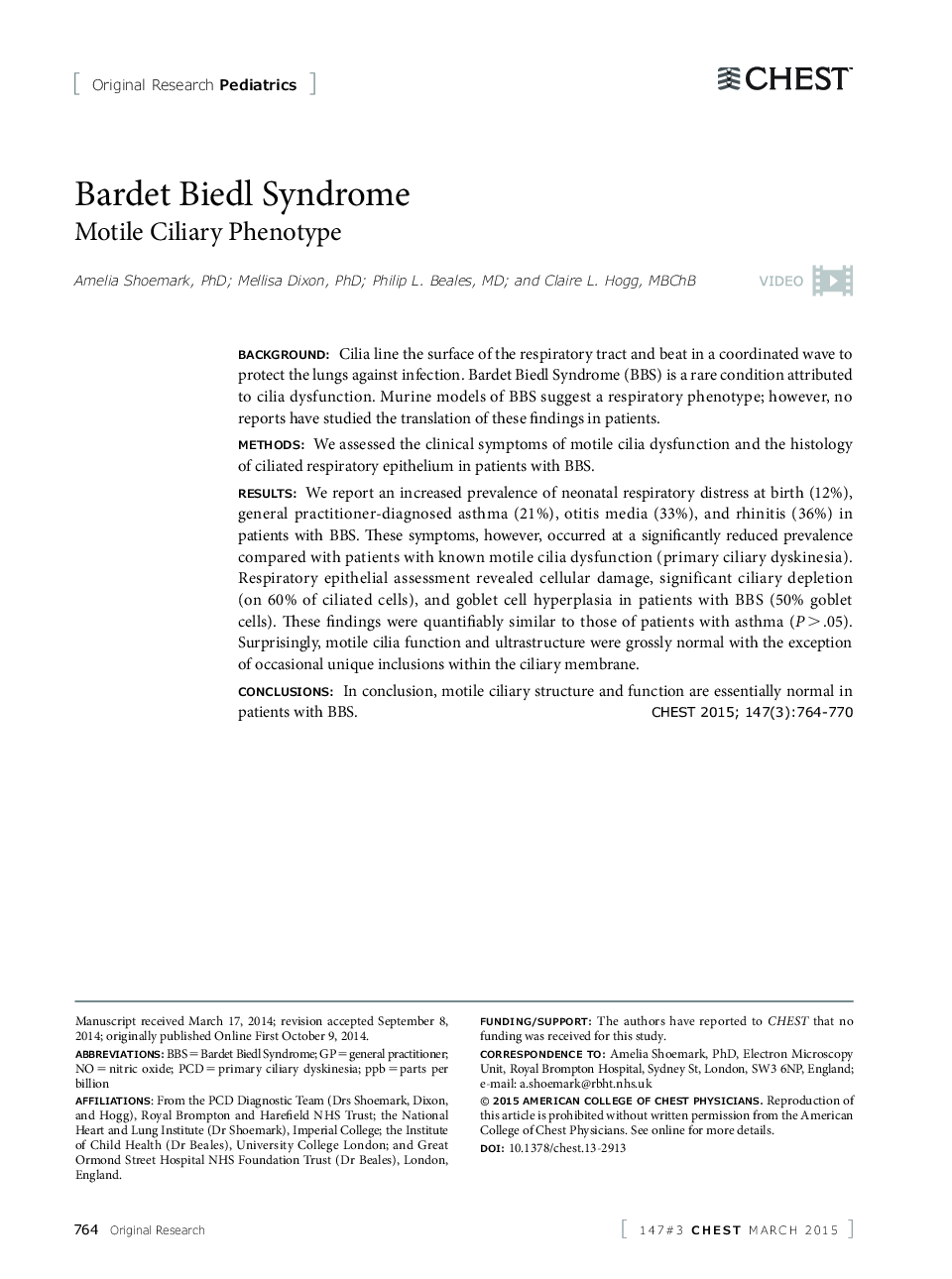| Article ID | Journal | Published Year | Pages | File Type |
|---|---|---|---|---|
| 2899768 | Chest | 2015 | 7 Pages |
BACKGROUNDCilia line the surface of the respiratory tract and beat in a coordinated wave to protect the lungs against infection. Bardet Biedl Syndrome (BBS) is a rare condition attributed to cilia dysfunction. Murine models of BBS suggest a respiratory phenotype; however, no reports have studied the translation of these findings in patients.METHODSWe assessed the clinical symptoms of motile cilia dysfunction and the histology of ciliated respiratory epithelium in patients with BBS.RESULTSWe report an increased prevalence of neonatal respiratory distress at birth (12%), general practitioner-diagnosed asthma (21%), otitis media (33%), and rhinitis (36%) in patients with BBS. These symptoms, however, occurred at a significantly reduced prevalence compared with patients with known motile cilia dysfunction (primary ciliary dyskinesia). Respiratory epithelial assessment revealed cellular damage, significant ciliary depletion (on 60% of ciliated cells), and goblet cell hyperplasia in patients with BBS (50% goblet cells). These findings were quantifiably similar to those of patients with asthma (P> .05). Surprisingly, motile cilia function and ultrastructure were grossly normal with the exception of occasional unique inclusions within the ciliary membrane.CONCLUSIONSIn conclusion, motile ciliary structure and function are essentially normal in patients with BBS.
